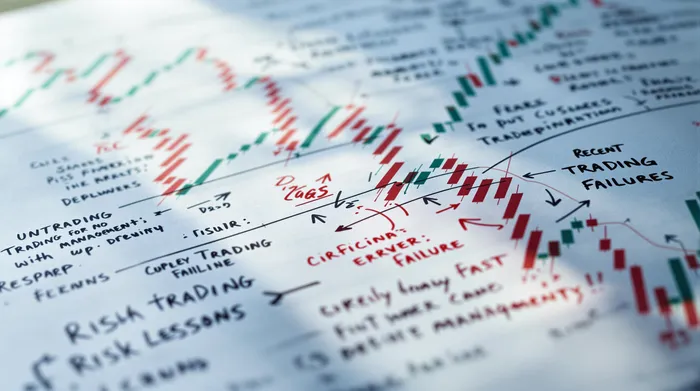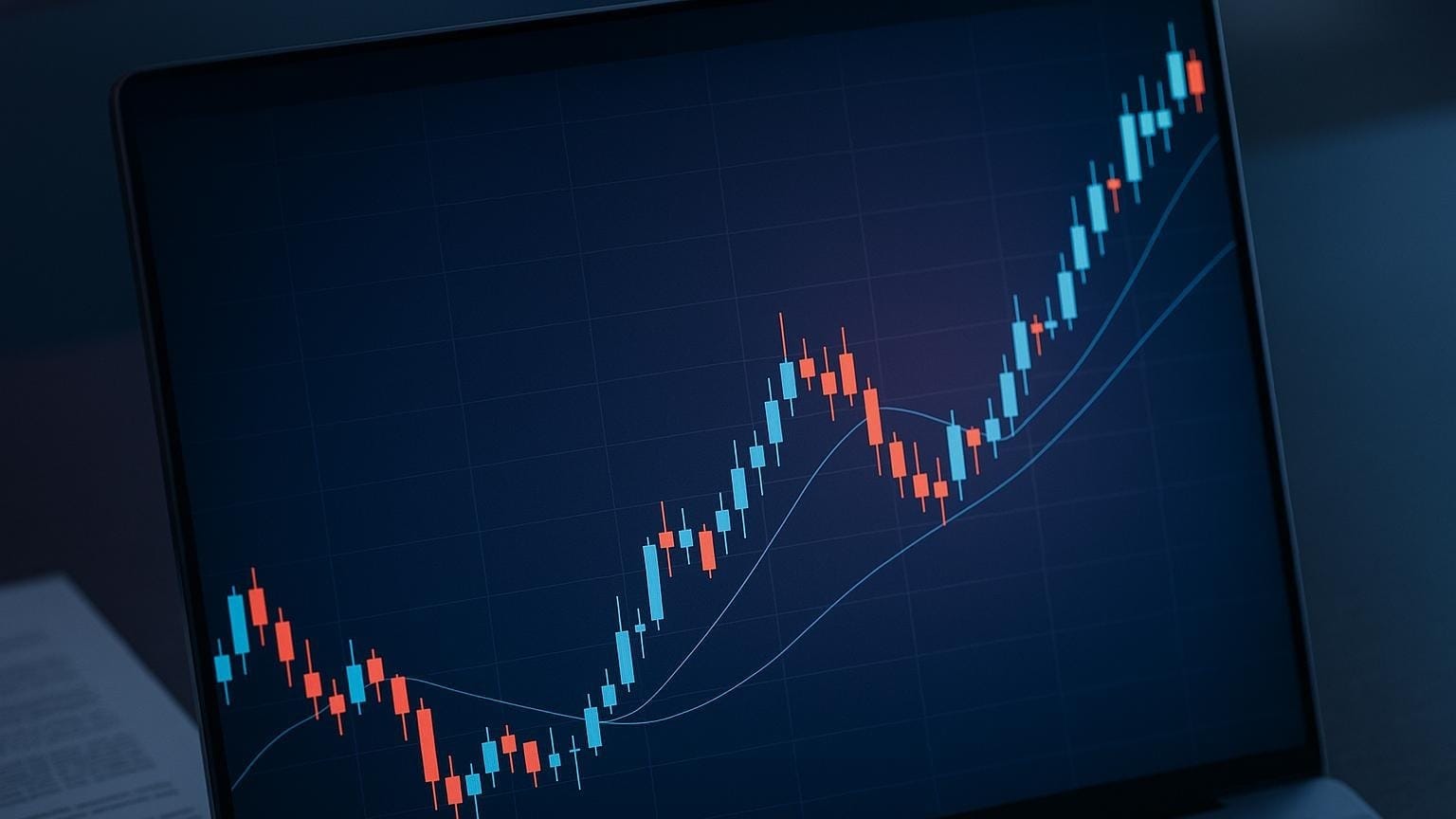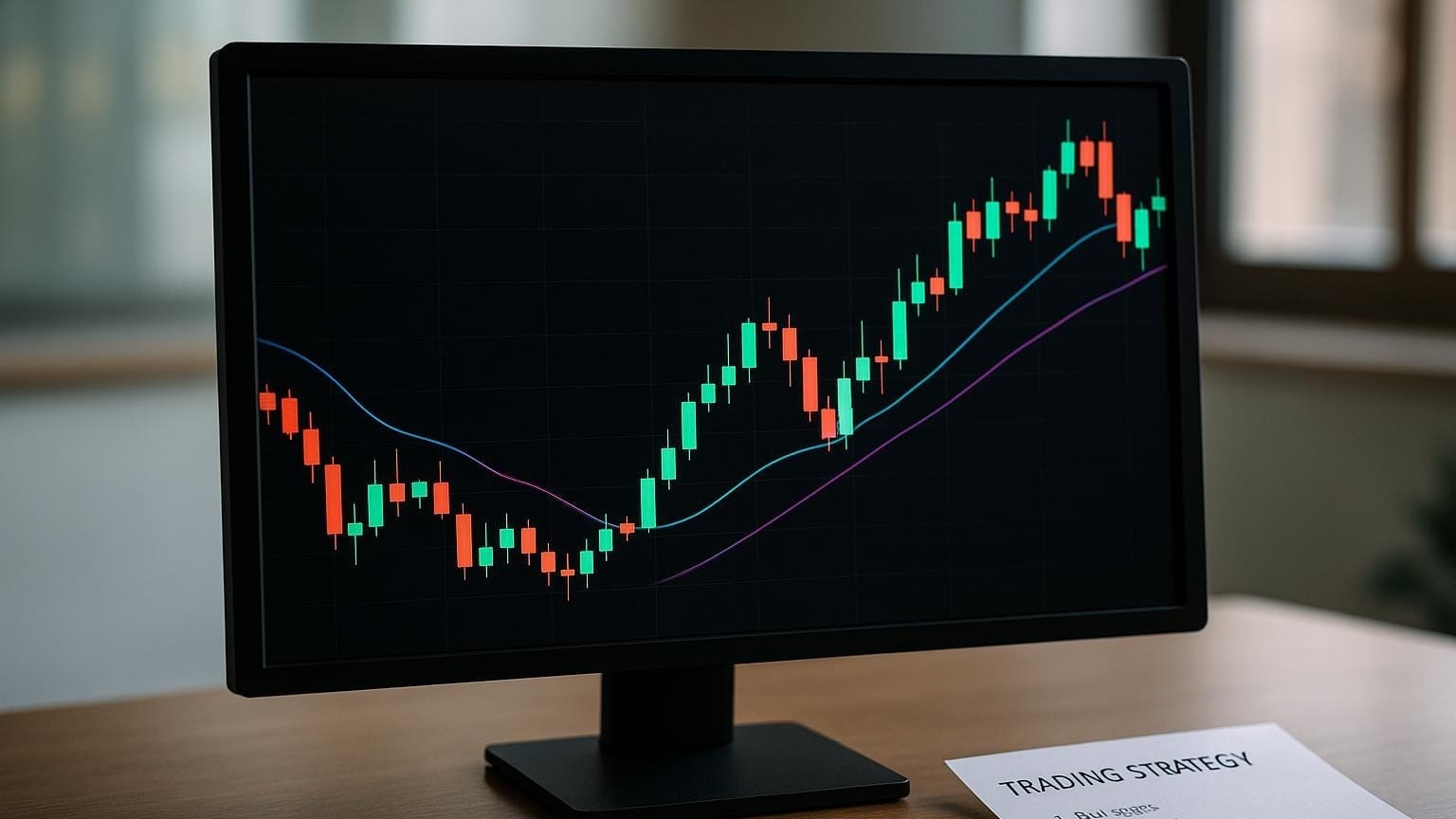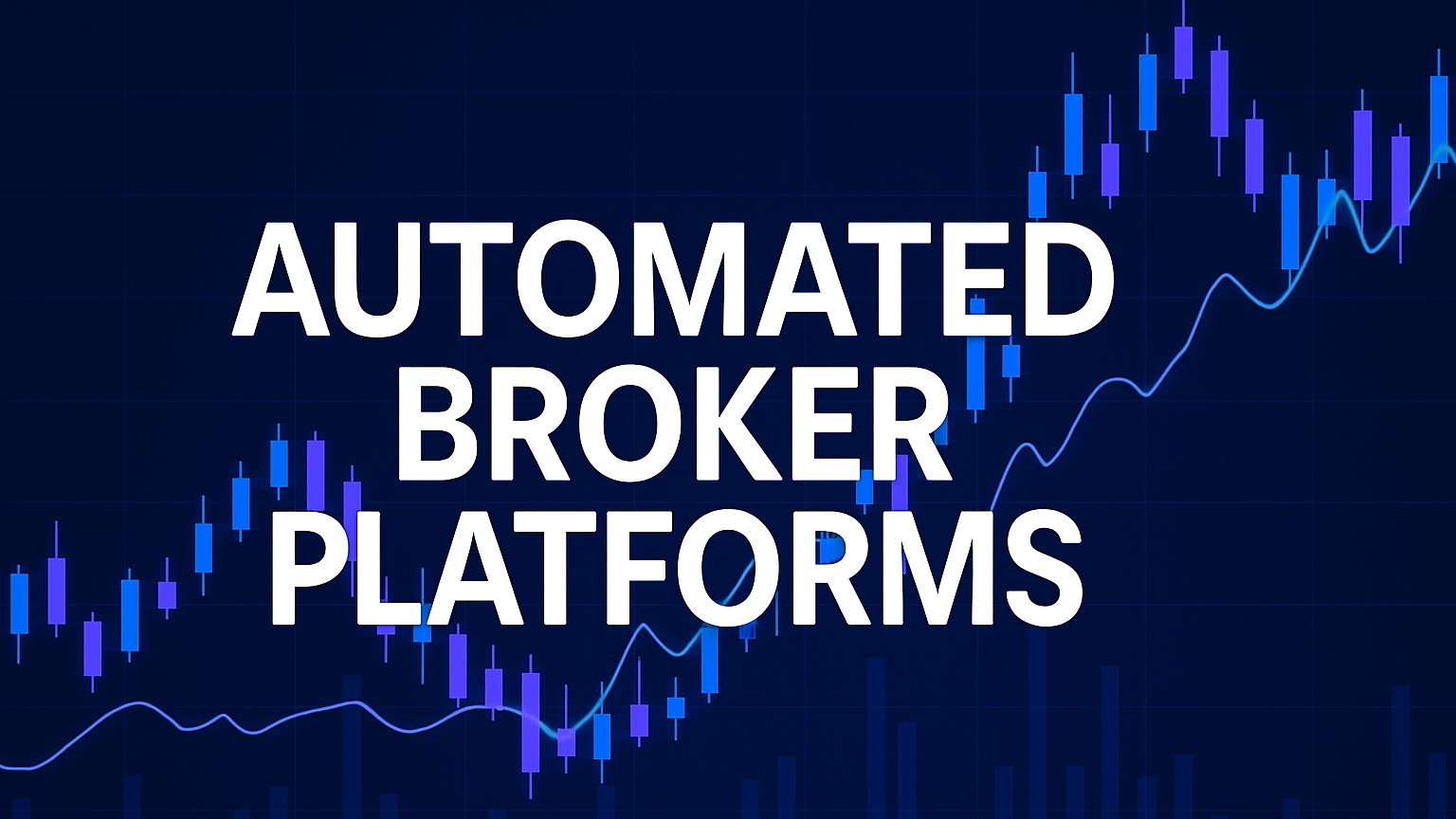Explore the critical lessons and preventive measures from algorithmic trading failures to enhance risk management and system design.
Algorithmic trading can be highly efficient but also risky. Major failures like the Knight Capital $440 M loss in 45 minutes and the 2010 Flash Crash wiping out $1 trillion in minutes reveal critical vulnerabilities. Here's what you need to know:
- Key Risks: Outdated code, lack of risk controls, and insufficient testing.
- Prevention Steps:
- Rigorous backtesting (e.g., Monte Carlo simulations).
- Setting strict trading limits (e.g., position caps, stop-loss mechanisms).
- Balancing automation with human oversight.
- Lessons Learned:
- Test systems thoroughly under diverse conditions.
- Use real-time monitoring to catch anomalies early.
- Implement circuit breakers to prevent cascading failures.
Quick Takeaway: Strong risk management, continuous monitoring, and robust testing are essential to avoid catastrophic algo-trading failures.
Stock Market Crash – Flash Crash May 6 2010
Major Algo-Trading Disasters
These examples highlight how technical errors in algorithmic trading can lead to market-wide chaos.
Knight Capital's $440 Million Loss (2012)
In 2012, Knight Capital suffered a devastating $440 million loss in just 45 minutes due to a deployment mistake. An outdated piece of code, called “Power Peg”, was accidentally left active on one of its eight servers, triggering millions of unintended trades and severely disrupting market liquidity.
"With the events of yesterday, you have to question if this is the beginning of the end for Knight." – Christopher Nagy, founder of KOR Trading
This incident became a cautionary tale for the industry, underscoring the risks of poor system management.
The Flash Crash of 2010
On May 6 2010, U.S. markets experienced a dramatic flash crash, wiping out nearly $1 trillion in market value within minutes. The Dow Jones Industrial Average plunged 998.5 points (about 9 %) before recovering in just 36 minutes. The crash was triggered by Waddell & Reed Financial Inc., which executed a massive algorithmic trade involving 75 000 E-Mini S&P contracts worth $4.1 billion. Their algorithm, designed to sell at 9 % of the prior minute's trading volume regardless of price or timing, caused a “hot-potato” effect among high-frequency traders.
Quant Meltdown of 2007
The Quant Meltdown highlighted the dangers of overlapping strategies among high-frequency traders. By 2009, these traders accounted for 61 % of trading volume, a figure that later dropped to 53 % as the risks became more apparent.
| Trading-System Component | Key Failure Point | Prevention Measure |
|---|---|---|
| Code Deployment | Outdated code left active | Automated deployment processes |
| Risk Controls | Lack of trading limits | Circuit breakers and position limits |
| Market Impact | Excessive trade volume | Volume-aware execution algorithms |
| System Testing | Insufficient pre-release testing | Comprehensive testing protocols |
These events spurred regulatory changes, including SEC circuit breakers and trading curbs aimed at preventing similar disruptions. During the Flash Crash, high-frequency traders executed over 27 000 contracts between 2 :45 :13 and 2 :45 :27, making up nearly 49 % of total trading volume.
Risk-Prevention Steps
Strong prevention measures are critical after algorithmic trading failures. While LuxAlgo provides advanced tools for testing trading strategies, effective risk management requires a more thorough approach.
Testing and Market Simulation
Start with detailed backtesting across various conditions using reliable historical data. Common testing methods include:
| Testing Method | Purpose | Key Benefit |
|---|---|---|
| Out-of-Sample Testing | Tests strategy on unseen data | Helps avoid overfitting |
| Walk-Forward Analysis | Evaluates parameters in sequential chunks | Adjusts to market changes |
| Monte Carlo Simulation | Simulates performance in multiple scenarios | Stress-tests strategies |
| Noise Testing | Identifies overfit strategies | Reduces false positives |
"The first rule of an investment is never lose money. And the second rule of an investment is never forget the first rule." – Warren Buffett
Accurate testing helps define precise trading limits and reduces unnecessary risks.
Setting Trading Limits
In markets dominated by algorithmic trading, setting strict trading limits is essential for managing exposure. Key safeguards include:
- Position Limits: Automatically cap total exposure per instrument.
- Loss Thresholds: Predetermined drawdown levels that trigger position closures.
- Volume Controls: Limit trade size relative to overall market volume.
- Dynamic Stop-Loss: Adjustable stop-loss levels based on market volatility.
Balancing Human Oversight with Automation
While automation improves efficiency, human oversight remains indispensable. The Securities and Exchange Commission (SEC) emphasizes:
"Continued vigilance in monitoring these advances in technology and trading, and updating of systems and expertise will be necessary in order to help ensure that our capital markets remain fair, deep, and liquid."
With high-frequency trading (HFT) accounting for 60-70 % of U.S. trades, human involvement is vital for:
- Monitoring algorithms for anomalies or unexpected behavior.
- Adjusting strategies during volatile or unforeseen market conditions.
- Ensuring compliance with regulatory standards.
- Testing and validating system updates before implementation.
Modern trading platforms integrate automated tools with human oversight, enabling traders to refine strategies while maintaining control over risks.
Building Better Trading Systems
Risk-Management Steps
Effective trading systems depend on strong risk-management practices. Successful traders often focus on these critical elements:
| Risk Component | Implementation | Purpose |
|---|---|---|
| Position Sizing | Adjusting allocations based on volatility | Limits overexposure during volatile markets |
| Strategy Diversification | Trading across various assets and sectors | Minimizes the impact of failures in a single market |
| Real-time Monitoring | Alerts and anomaly-detection tools | Identifies issues early to prevent major losses |
| Automatic Stop-Loss Orders | Pre-set thresholds to halt trades | Ensures trades stop when risk limits are exceeded |
The foundation of effective risk management is clean, trustworthy data.
Data-Quality Control
High-quality data is essential for any trading system to perform as expected. For instance, Two Sigma, a top quantitative investment firm, employs advanced data-governance frameworks that include:
- Systematic validation of market-data feeds
- Real-time consistency checks across sources
- Automated anomaly detection and reporting
- Regular audits to ensure data quality
"The more important reason to avoid 'cleaning' your data, in the conventional sense, is that the cleaning process almost always degrades the data quality."
Instead of over-cleaning, firms design models capable of handling anomalies. QuantConnect, for example, provides traders with pre-validated historical and live market data to support their strategies.
Using LuxAlgo for Testing

Alongside strong risk management and reliable data, advanced backtesting tools play a crucial role in building resilient trading systems. LuxAlgo’s AI Backtesting Assistant enhances strategy testing and optimisation for over 15 000 traders, offering:
- AI-powered strategy discovery and optimisation
- Real-time performance tracking
- Advanced signal-setting adjustments
The Ultimate plan ($59.99 mo) includes three specialised backtesting tools plus the AI Assistant.
"Algorithmic trading has always been an exciting area for retail, but people ignore that it also carries significant risks - extending beyond algorithm-specific issues to..." – Sonam Srivastava (Dec 13 2024)
By combining advanced testing tools like LuxAlgo with strong risk-management practices, traders can adapt their strategies to thrive in ever-changing market conditions.
Conclusion
Key Takeaways
Algorithmic trading thrives on solid risk management and resilient system design. Incidents like Knight Capital’s $440 million loss and the 2010 Flash Crash highlight the importance of effective safeguards. Success depends on three core areas:
| Risk-Management Area | Key Practices | Impact on Safety |
|---|---|---|
| System Architecture | Multi-layer monitoring, kill switches, circuit breakers | Prevents major failures and limits potential losses |
| Testing Protocol | Rigorous backtesting, stress tests, real-time monitoring | Identifies and mitigates vulnerabilities before live trading |
| Human Oversight | Expert monitoring, clear incident protocols, intervention points | Ensures quick response during unexpected events |
The Future of Algorithmic Trading
The next phase of algorithmic trading focuses on smarter risk controls and adapting to stricter regulations. Industry advancements are blending technology with proven safety practices to create better trading systems.
"Electronic trading and algorithmic trading are both widespread and integral to the operation of our capital markets." – U.S. Securities and Exchange Commission
Innovative providers like LuxAlgo are at the forefront, using AI-driven tools to enhance risk management. Emerging trends shaping the industry include:
- Regulatory Balance: Aligning innovation with stringent risk controls.
- AI and Machine Learning: Detecting and addressing risks more effectively.
- Real-time Monitoring: Research shows roughly fourteen minor flash crashes occur daily, making continuous monitoring essential.
As Jeff Sekinger notes, "Good risk management is the foundation of successful algorithmic trading operations". By adopting evolving strategies, traders can better navigate future market challenges and enhance their performance.








